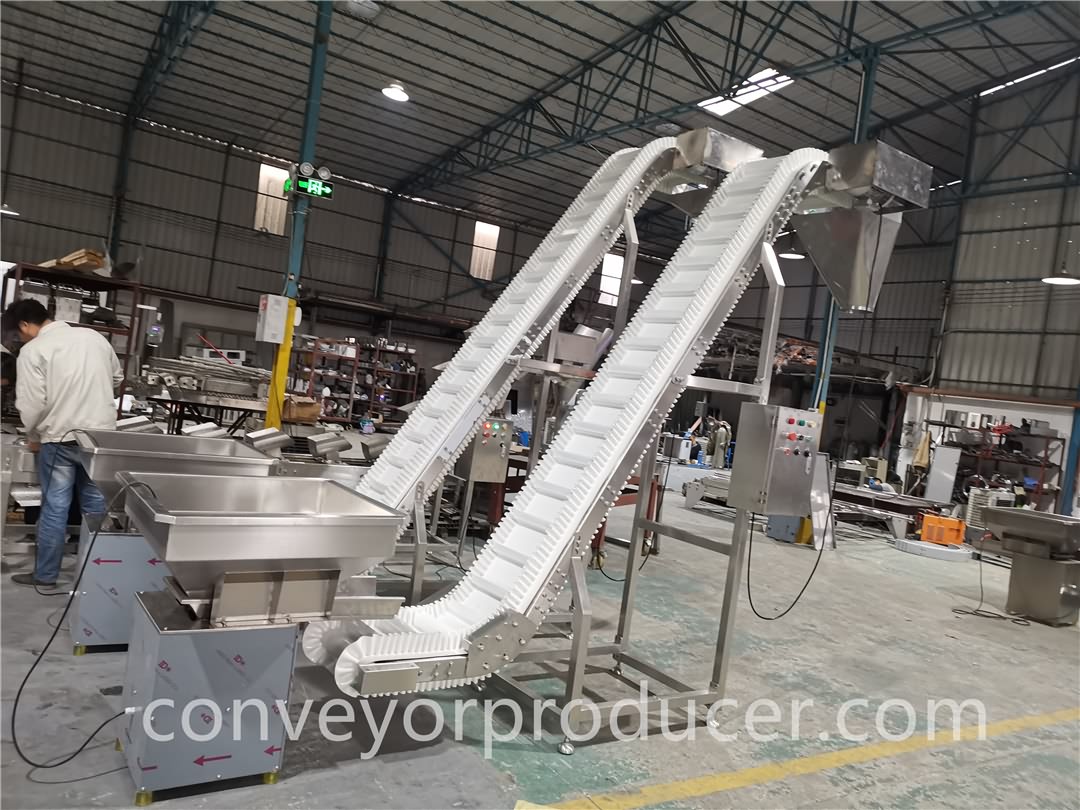The main transmission parts of the belt conveyor are the conveyor belt, the roller and the idler. Each part is related to each other. The failure of any part itself will cause other parts to fail over time, thereby reducing the performance of the conveyor. Shorten the life of transmission parts. The faults in the design and manufacturing of the rollers cause the complete failure of the belt conveyor to run normally: belt deviation, belt surface slippage, vibration, and noise.
The working principle of the belt conveyor is that the motor drives the roller to drive the conveyor belt through the friction between the belts. The rollers are generally divided into two categories: driving rollers and redirecting rollers. The drive roller is the main component that transmits the driving force, and the reversing roller is used to change the running direction of the conveyor belt, or to increase the wrapping angle between the conveyor belt and the drive roller.
The belt deviation is a common fault when the belt conveyor is running. In theory, the rotation center of the drum and the idler must be in contact with the longitudinal center of the conveyor belt at a right angle, and the drum and the idler must have a symmetrical diameter with the belt centerline. However, various errors will occur in actual processing. Due to the misalignment of the center or the deviation of the belt itself during the belt splicing process, the contact conditions of the belt with the drum and the idler during operation will change, and the belt deviation will not only affect production, but also Damage to the belt will also increase the running resistance of the whole machine.
The belt deviation mainly involves the reason of the roller
1. The diameter of the drum changes due to the influence of attachments after processing or use.
2. The head drive drum is not parallel to the tail drum, and not perpendicular to the center of the fuselage.
The operation of the belt relies on the drive motor to drive the drive roller, and the drive roller relies on the friction between it and the conveyor belt to drive the belt to run. Whether the belt runs smoothly has a great influence on the mechanics, efficiency and life of the belt conveyor, and the belt slips. May cause the conveyor to not work properly.
Belt slippage mainly involves the cause of the drum
1. The drive roller is degummed, which reduces the friction coefficient between the drive roller and the belt.
2. The design size or installation size of the drum is incorrectly calculated, resulting in insufficient wrapping angle between the drum and the belt, reducing frictional resistance.
Causes and hazards of belt conveyor vibration
When the belt conveyor is running, a large number of rotating bodies such as rollers and idler groups will generate vibration during operation, which will cause fatigue damage to the structure, loosening and failure of equipment, and noise, which will affect the smooth operation, running resistance and safety of the whole machine. Sex has a huge impact.
The vibration of the belt conveyor mainly involves the reason of the roller
1. The quality of the drum processing is eccentric, and periodic vibration is generated during operation.
2. The deviation of the outer diameter of the drum is large.
Causes and hazards of belt conveyor noise
When the belt conveyor is running, its drive device, roller and idler group will make a lot of noise when it is not working normally. The noise will cause harm to human health, seriously affect the quality of work, reduce work efficiency, and even cause work accidents.
The noise of the belt conveyor mainly involves the reason of the roller
1. The static unbalanced noise of the drum is accompanied by periodic vibration. The wall thickness of the manufacturing drum is not uniform, and the centrifugal force generated is large.
2. The diameter of the outer circle has a large deviation, which makes the centrifugal force too large.
3. The unqualified processing size causes wear or damage to the internal parts after assembly.
Post time: Nov-07-2022

